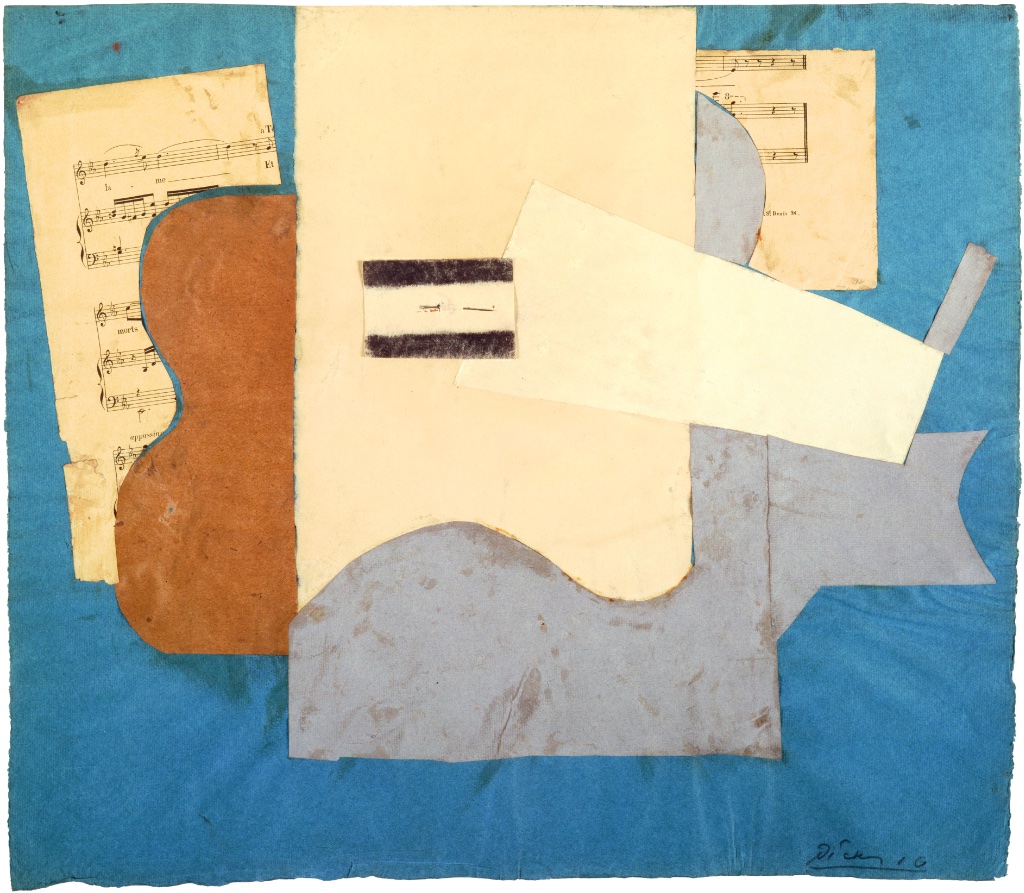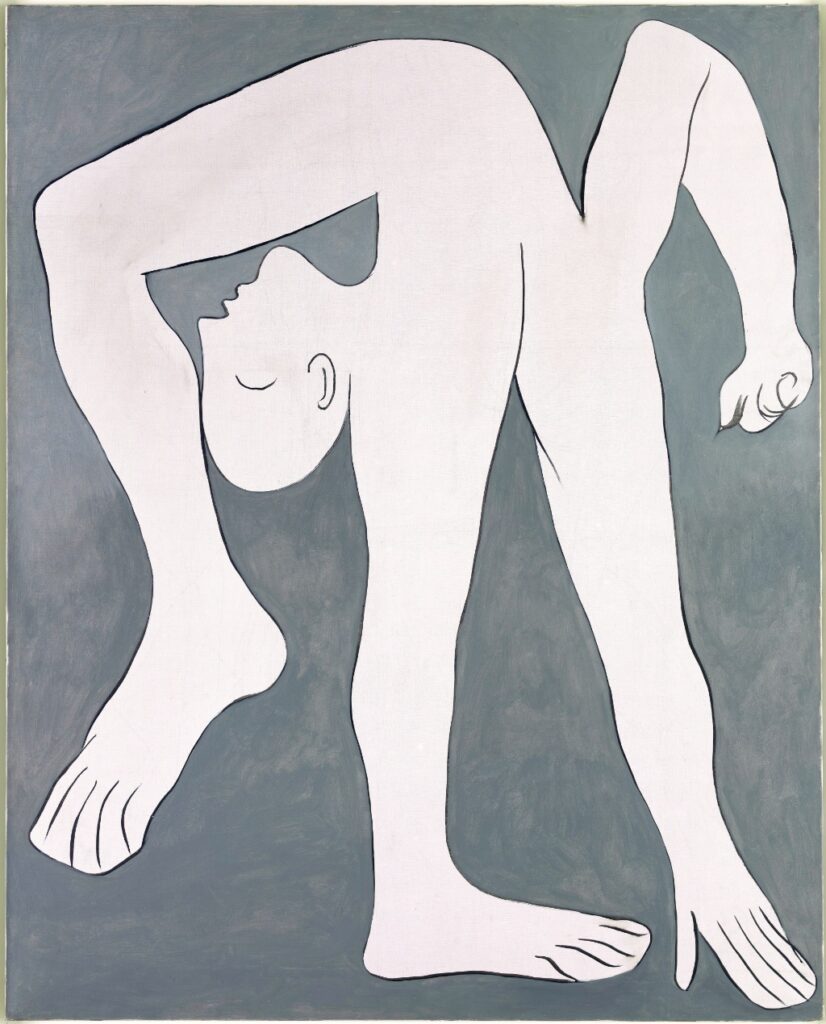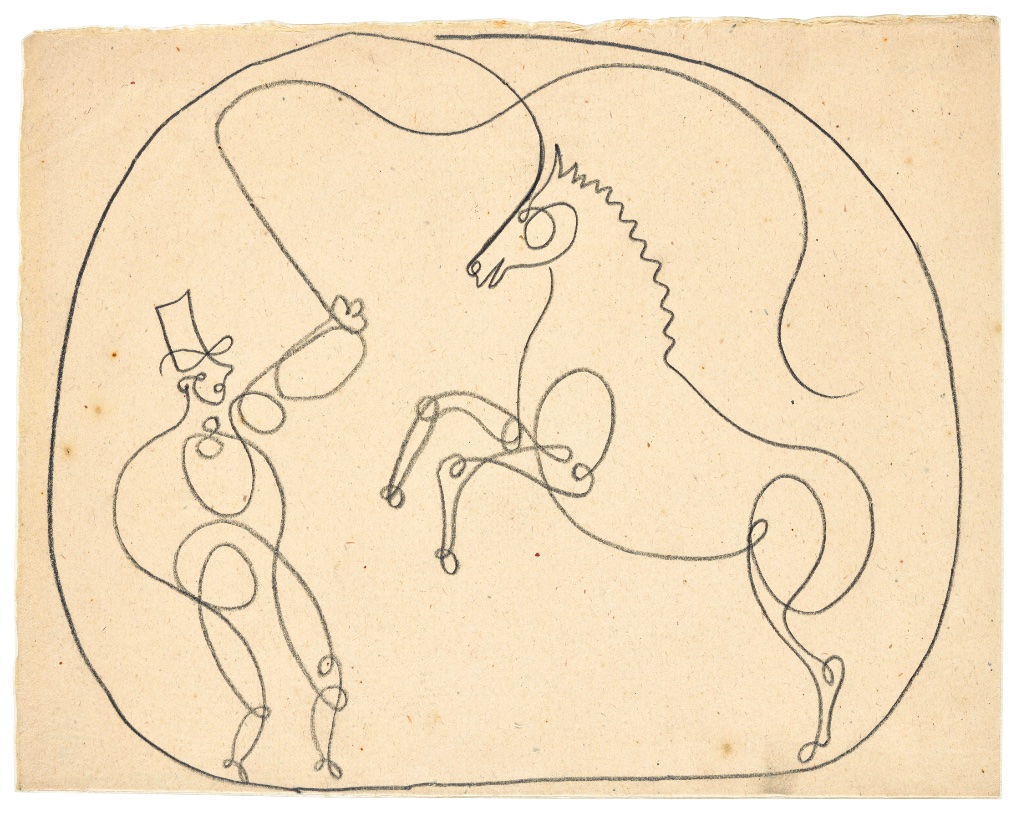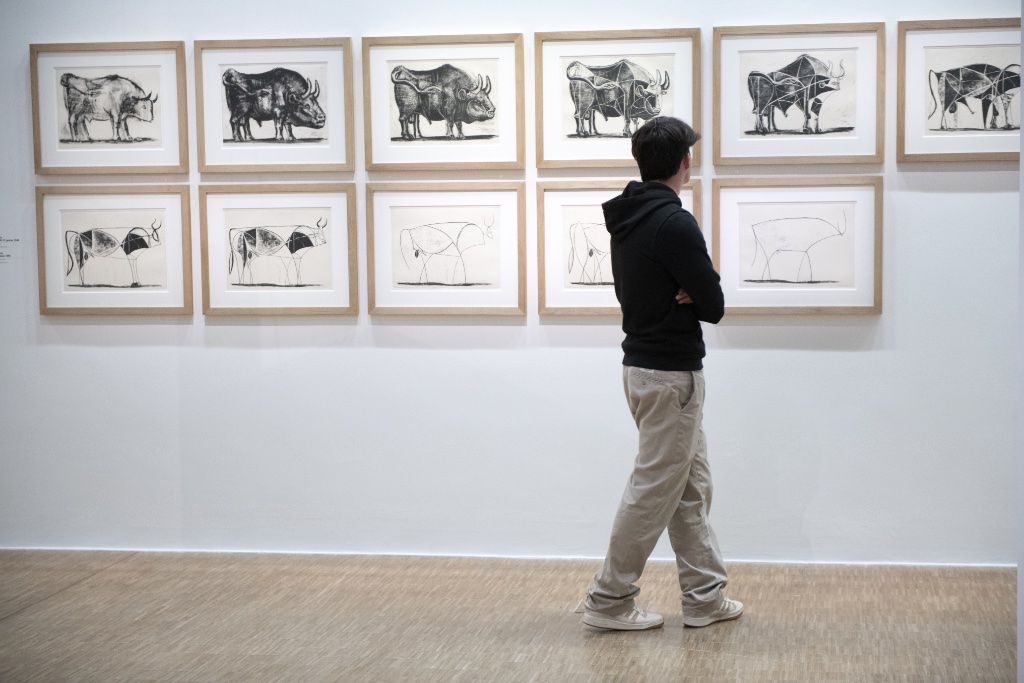
The year of the “Picasso Celebration” is drawing to an end, so this may be the last you hear about the dozens of exhibitions around the world commemorating the 50th anniversary of the artist’s death. Some, however, are spilling over into the coming year, including the marvelous show of his drawings, “Picasso. Dessiner à l’Infini” (“Picasso: Endlessly Drawing)” at the Centre Pompidou (through January 15) in Paris.
The Picasso Museum itself may have been pretty much emptied out by Sophie Calle for her current show there, “À Toi de Faire, Ma Mignonne,” but the massive exhibition at Pompidou more than fills the void, with some 1,000 works on show, most of which come from the Picasso Museum (one of Calle’s backhanded tributes to Picasso, a photo of one of his works covered with brown paper and tape, has even managed to sneak its way into the Pompidou show).
There is something for everyone amid this explosion of creativity and experimentation that covers the artist’s entire career. If you are tired of running into the same works by Picasso you have seen over and over again, you will be delighted to encounter some that are new to you, such as the wonderful, unfamiliar (to me) “Torse d’Homme Nu” (a self-portrait?), sketched in black oil paint in Paris in the winter of 1906-07. In its lively lines and expressive face, you can almost feel the artist’s joy in having broken free from the academic constraints of his formal training as an artist, displayed in the amazingly accomplished academic drawings from 1894 and ’95 that open the exhibition, made when he was a young teenager.

If you are a victim of Picassomania, you will be delighted to see old favorites – such as a couple of his stylized acrobats (1930), all lanky arms and legs, with an incidental head tucked in between them.
If you can’t stand to see any more of Picasso’s work, you probably won’t go to the show, but if you do, you may be won over by at least some of this inundation of drawings. Who could resist the series “The Bull”(1945-46), 11 drawings of the animal in which the subject is treated in a variety of styles and finally simplified to the point where the last one is nothing but a few lines. Other examples are the rather beautiful Cubist work “Sheet Music and Guitar” (1912; pictured at the top of this page) and the charming drawings made with a single continuous line, like the circus image below.

The show is interspersed with films of Picasso in the act of drawing and painting. In a serendipitous encounter, I ran into an artist friend, Katerina Christidi, in front of the projection of the film Le Mystère Picasso, directed by Henri-Georges Clouzot in 1956, in which we see Picasso making 20 paintings and drawings in real time. Katerina told me that she had first seen it as a child when her parents took her to the cinema in Greece. Fascinated, she decided then and there to become an artist.
Another friend later told me that she was also inspired by the film as a youngster. After seeing it, she sat down to draw with Picassoesque flowing ease and was distressed to discover that she just couldn’t do it.
Well, we can’t all be Picasso, but we can all revel in at least some of his works. Do see this show if you can – only a couple of weeks left. After that, we are all entitled to a rest from Picassomania. That is, after I see the show “Gertrude Stein et Pablo Picasso” at the Musée du Luxembourg (through January 28).
See our list of Current & Upcoming Exhibitions to find out what else is happening in the Paris art world.
Favorite
